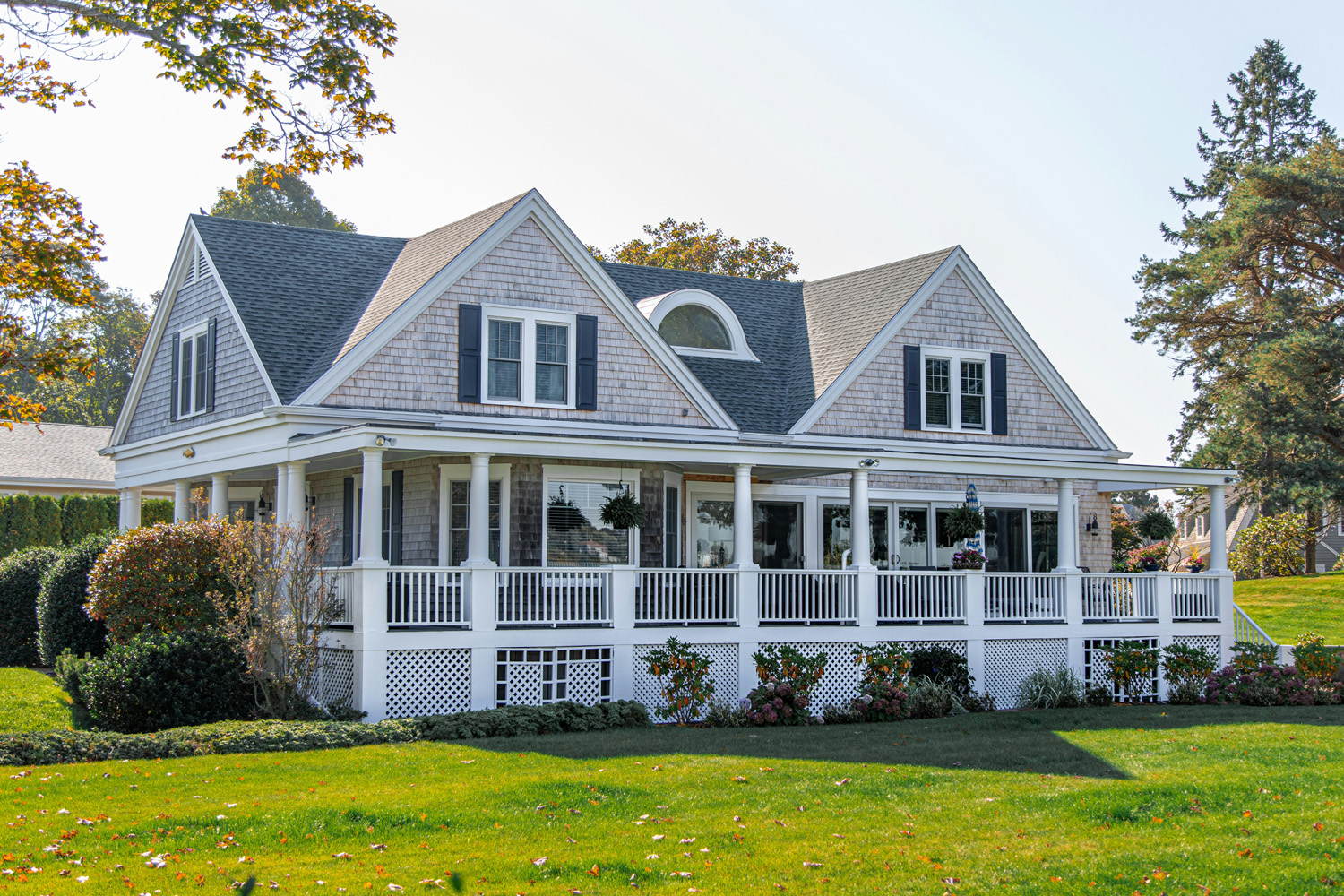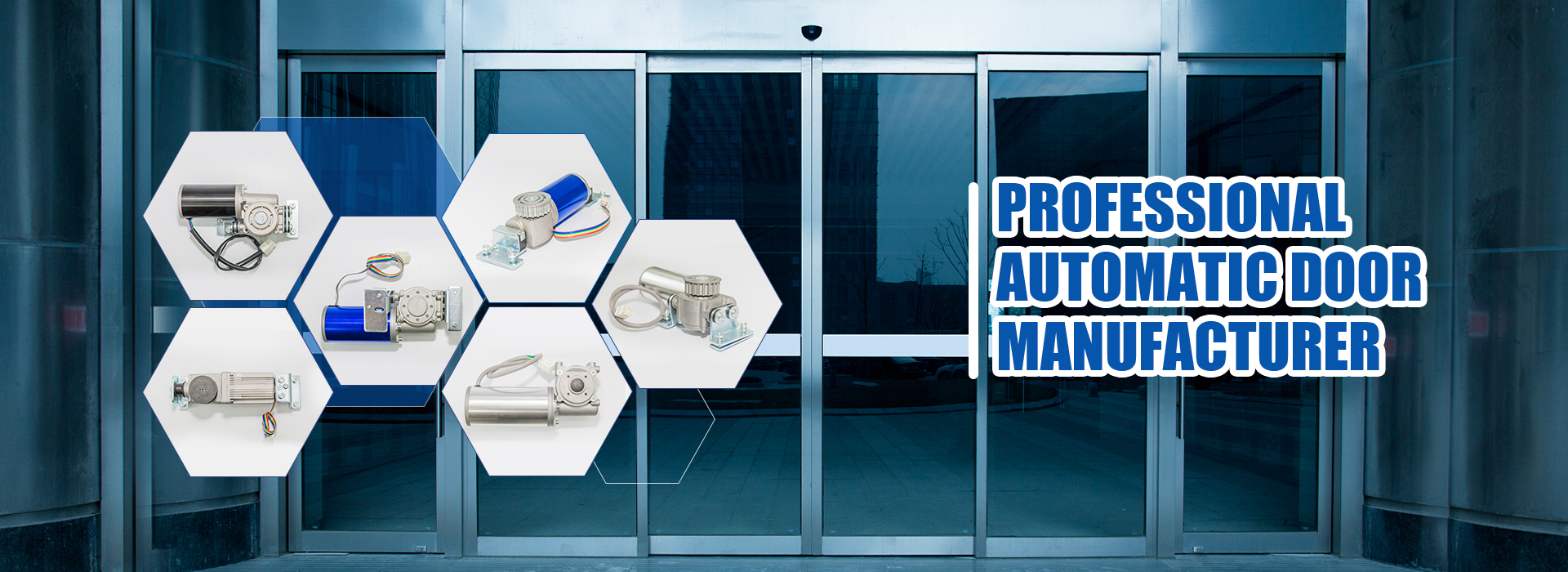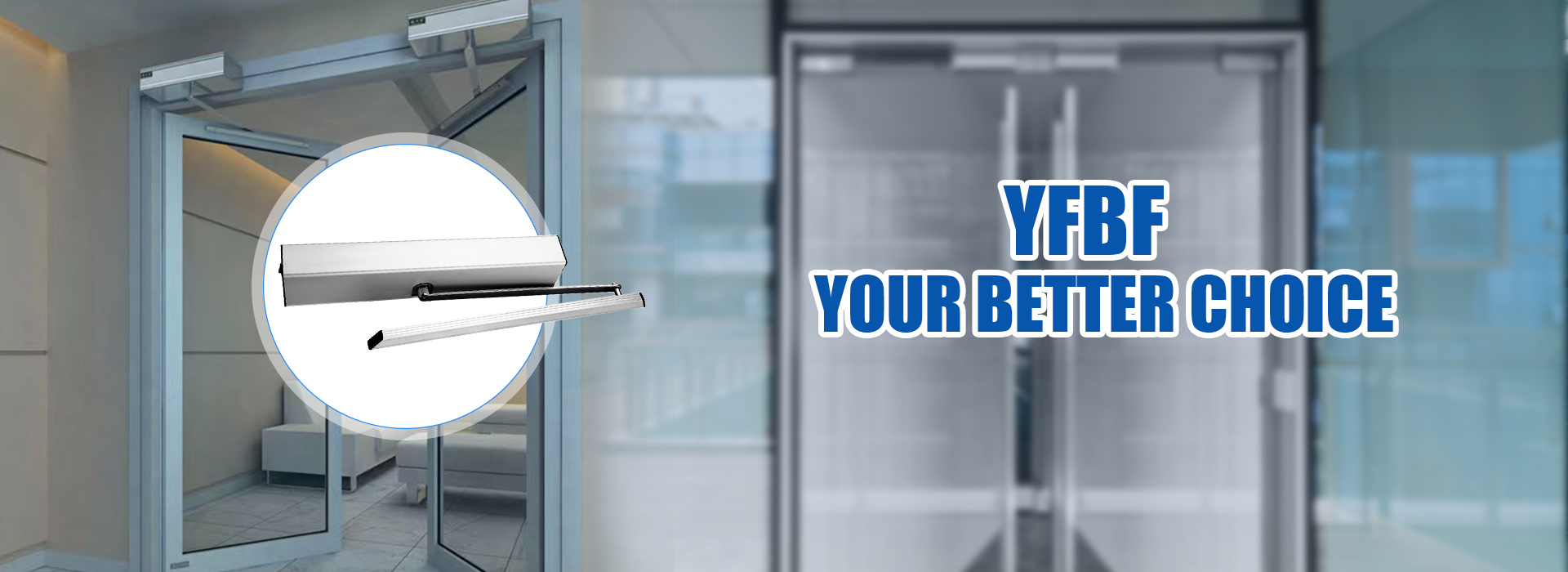
Homeowners see more value in convenience and safety. A Residential Automatic Swing Door Opener brings both. Many families choose these openers for easy access, especially for aging loved ones. The global market for these devices reached $2.5 billion in 2023 and keeps growing with smart home trends.
Key Takeaways
- Automatic swing door openers bring convenience and safety by offering quiet, smooth operation and easy hands-free access, especially helpful for families and aging loved ones.
- Look for openers with smart home integration and safety sensors to control your door remotely and protect kids, pets, and visitors from accidents.
- Choose a model that fits your door’s size, weight, and material, and consider features like backup power and easy manual operation to ensure reliability during power outages.
Key Features of a Residential Automatic Swing Door Opener
Quiet and Smooth Operation
A quiet home feels peaceful. That is why many people look for a Residential Automatic Swing Door Opener that works without loud noises or jerky movements. These openers use advanced motors and smart controls to keep things smooth. For example, the opener only needs a gentle force below 30N to open or close the door. This low force means less noise and less effort. Homeowners can also adjust how fast the door opens and closes, anywhere from 250 to 450 mm per second. The opening time can be set between 1 and 30 seconds. With these settings, families can make sure the door moves just the way they like it—quiet and calm every time.
Remote Control and Smart Home Integration
Modern homes use smart technology to make life easier. A Residential Automatic Swing Door Opener can connect with remote controls, smartphones, and even smart home systems. This means people can open or close the door with a simple button press, even if their hands are full or they are outside in the yard. Smart home integration lets users control the door from anywhere using an app. They can let in guests or deliveries without getting up. The system can also work with security cameras and alarms, making the home safer. Some openers even keep a log of who comes and goes, so families always know what is happening at their front door.
Tip: Smart home integration not only adds convenience but also increases the value of the property. Tech-savvy buyers often look for homes with these features.
Safety Sensors and Obstruction Detection
Safety matters most, especially when doors move on their own. That is why these openers come with sensors that stop the door if something gets in the way. The sensors work by checking the force needed to move the door. If the force goes above a safe level, the door stops or reverses. Here is a quick look at how these sensors perform:
| Parameter | Requirement |
|---|---|
| Force threshold at room temp | Sensor must actuate at 15 lbf (66.7 N) or less at 25 °C ±2 °C (77 °F ±3.6 °F) |
| Force threshold at low temp | Sensor must actuate at 40 lbf (177.9 N) or less at −35 °C ±2 °C (−31 °F ±3.6 °F) |
| Force application for swing doors | Force applied at 30° angle from perpendicular to door plane |
| Endurance test cycles | Sensor system must withstand 30,000 mechanical operation cycles without failure |
| Endurance test conditions | Force applied repetitively at room temperature; sensor must function during last 50 cycles |
These features help protect kids, pets, and anyone else who might be near the door.
Energy Efficiency and Power Options
Saving energy helps both the planet and the family budget. Many automatic swing door openers use motors that only need about 100W of power. This low power use means the device does not waste electricity. The opener also helps keep the house warm in winter and cool in summer by making sure the door does not stay open longer than needed. Some models offer backup batteries, so the door keeps working even if the power goes out. Homeowners can feel confident that their opener will not drive up energy bills.
Adjustable Opening Angle and Timing
Every home is different. Some doors need to open wide, while others only need a small gap. A good Residential Automatic Swing Door Opener lets users adjust the opening angle, usually between 70º and 110º. People can also set how long the door stays open before it closes again. These options help families customize the door to fit their daily routines. For example, someone carrying groceries might want the door to stay open longer, while others may prefer it to close quickly for security.
Ensuring Compatibility with Your Home
Door Size, Weight, and Material Considerations
Every home has different doors. Some are wide and tall, while others are narrow or short. The size and weight of a door matter when choosing an automatic opener. Heavier doors need stronger motors. Lighter doors can use smaller models. For example, the ED100 model works for doors up to 100KG. The ED150 handles up to 150KG. The ED200 and ED300 models support doors up to 200KG and 300KG. Homeowners should check their door’s weight before picking a model.
The material of the door also plays a big role. Many openers work with glass, wood, metal, or even insulated panels. Some doors have special coatings or finishes. These can affect how the opener attaches. Most modern openers, like the Residential Automatic Swing Door Opener, come with flexible mounting options. This makes them easy to install on many types of doors.
Tip: Always measure the width and height of your door before buying an opener. This helps avoid mistakes and saves time during installation.
Types of Doors Supported by Residential Automatic Swing Door Openers
Not all doors are the same. Some homes have single doors, while others use double doors for bigger entryways. Automatic swing door openers support both types. They also work with doors that swing in or out. Here is a quick look at the compatibility range:
| Specification Aspect | Details |
|---|---|
| Door Types | Single leaf, double leaf swing doors |
| Door Width Range | Single leaf: 1000mm – 1200mm; Double leaf: 1500mm – 2400mm |
| Door Height Range | 2100mm – 2500mm |
| Door Materials | Glass, wood, metal, PUF insulated panels, GI sheets |
| Opening Direction | Swinging |
| Wind Resistance | Up to 90 km/h (higher available on request) |
This table shows that most homes can use an automatic opener, no matter the door style or material. Some brands, like KONE, design their openers for tough environments. They work well with double swing doors and keep running smoothly for years.
Manual Operation and Power Failure Features
Sometimes, the power goes out. People still need to get in and out of their homes. Good automatic swing door openers let users open the door by hand during a power failure. Many models use a built-in door closer. When the power stops, the closer pulls the door shut. This keeps the home safe and secure.
Some openers also offer backup batteries. These batteries keep the door working for a while, even without electricity. Homeowners can feel confident that their door will not get stuck. Manual operation features make life easier for everyone, especially in emergencies.
Note: Look for openers with easy manual release and backup power. These features add peace of mind and keep the home accessible at all times.
Installation and Maintenance for Residential Automatic Swing Door Opener

DIY vs. Professional Installation
Many homeowners wonder if they can install a Residential Automatic Swing Door Opener by themselves. Some models come with clear instructions and modular parts. People with basic tools and a little experience can handle these. DIY installation saves money and gives a sense of achievement. However, some doors or openers need special skills. Heavy doors or advanced features may require a professional. A trained installer can finish the job quickly and make sure everything works safely.
Tip: If the door is heavy or made of glass, a professional installer is the best choice.
Tools and Setup Requirements
Setting up a swing door opener does not need many tools. Most people use a drill, screwdriver, tape measure, and level. Some kits include mounting brackets and screws. Here is a quick checklist:
- Drill and drill bits
- Screwdriver (Phillips and flathead)
- Tape measure
- Level
- Pencil for marking holes
Some openers use plug-and-play wiring. This makes the process even easier. Always read the manual before starting.
Maintenance Tips and Longevity
A Residential Automatic Swing Door Opener needs little care. Regular checks keep it running smoothly. Homeowners should:
- Wipe dust from sensors and moving parts
- Check for loose screws or brackets
- Test the safety sensors every month
- Listen for strange noises
Most openers use a maintenance-free design. This means fewer worries over time. A little attention helps the opener last for years.
Budget and Cost Considerations for Residential Automatic Swing Door Opener
Price Ranges and What to Expect
People often wonder how much an automatic swing door opener costs. Prices can start around $250 for basic models. More advanced openers with smart features or heavy-duty motors may cost up to $800 or more. Some brands include installation in the price, while others do not. Homeowners should check what comes in the box. A table can help compare options:
| Feature Level | Price Range | Typical Inclusions |
|---|---|---|
| Basic | $250–$400 | Standard opener, remote |
| Mid-range | $400–$600 | Smart features, sensors |
| Premium | $600–$800+ | Heavy-duty, smart home ready |
Balancing Features with Affordability
Not every home needs the most expensive opener. Some families want simple remote control. Others need smart home integration or extra safety. People should list their must-have features before shopping. This helps avoid paying for things they do not need. Many openers offer modular designs. Homeowners can add features later if they want.
Tip: Start with a model that fits your current needs. Upgrade later as your lifestyle changes.
Long-Term Value and Warranty
A good door opener lasts for years. Many brands offer maintenance-free designs and brushless motors. These parts save money on repairs. Warranties often range from one to five years. Longer warranties show that the company trusts its product. People should read the warranty details before buying. A strong warranty adds peace of mind and protects the investment.
Top Features to Look for in a Residential Automatic Swing Door Opener
Microcomputer and Intelligent Control Systems
Smart technology makes doors work better. Microcomputer controllers help the door move smoothly and stop in the right place every time. These systems let users adjust how fast the door opens and closes. They also make sure the door does not slam or get stuck. Brushless DC motors keep things quiet and last a long time. Safety improves with overload protection and sensors that connect to alarms or electric locks. The table below shows how these features help:
| Technological Feature | Performance Benefit |
|---|---|
| Microcomputer Controller | Precise control, speed optimization, accurate position, reliable operation |
| Brushless DC Motor | Low noise, long life, efficient, sealed to prevent leaks |
| Overload Protection | Safer use with sensors, access control, backup power |
| Infrared Scanning | Reliable detection, works in many environments |
| Sliding Suspension Wheels | Less noise, smooth movement |
| Aluminum Alloy Track | Strong and durable |
Modular and Maintenance-Free Design
A modular design makes life easier for everyone. People can install or replace parts without much trouble. Some brands use a mounting plate and just a few screws, so setup takes less time. If someone wants to upgrade or fix the system, they can swap out parts instead of buying a whole new unit. This design also helps with retrofitting older doors. Maintenance becomes simple because users can adjust speed or force with easy-to-reach valves. Many systems run for years with little care, saving time and money.
- Modular parts fit many door types.
- Quick installation with fewer tools.
- Easy upgrades and repairs.
- Less time spent on maintenance.
Safety and Security Enhancements
Safety stands out as a top concern. Modern door openers use sensors that spot people or pets near the door. If something blocks the way, the door stops or reverses. Newer sensors combine motion and presence detection, so they work better than old models. Some systems even check themselves for problems and stop working if a sensor fails. Daily checks help keep everything safe. Real-life cases show that working sensors and regular maintenance prevent injuries. The table below highlights key safety improvements:
| Safety Feature / Testing Aspect | Description / Evidence |
|---|---|
| Sensor Coverage Improvements | Better detection zones, longer hold-open times |
| Combination Sensors | Motion and presence detection in one unit |
| ‘Look Back’ Function | Monitors area behind door for extra safety |
| Self-Monitoring Systems | Stops door if sensors fail |
| Daily Inspections | Prevents accidents and keeps system reliable |
Tip: Always check sensors and controls often. This keeps everyone safe and the door working well.
Choosing the right automatic swing door opener means looking at your home’s needs, door type, and features. These systems boost comfort, safety, and hygiene.
| Benefit | Description |
|---|---|
| Accessibility | Hands-free entry for everyone |
| Hygiene | Fewer germs from less touching |
| Safety | Reliable operation in emergencies |
FAQ
How long does it take to install an automatic swing door opener?
Most people finish installation in about one to two hours. A professional installer can often complete the job even faster.
Are automatic swing door openers safe for kids and pets?
Yes, these openers use safety sensors. The door stops or reverses if it senses something in the way, keeping everyone safe.
Can these door openers connect to smart home systems?
Yes, many models work with smart home devices. Users can control the door with a remote, smartphone, or even voice commands.
Tip: Always check your opener’s manual for specific smart home compatibility and setup steps!
Post time: Jun-18-2025



